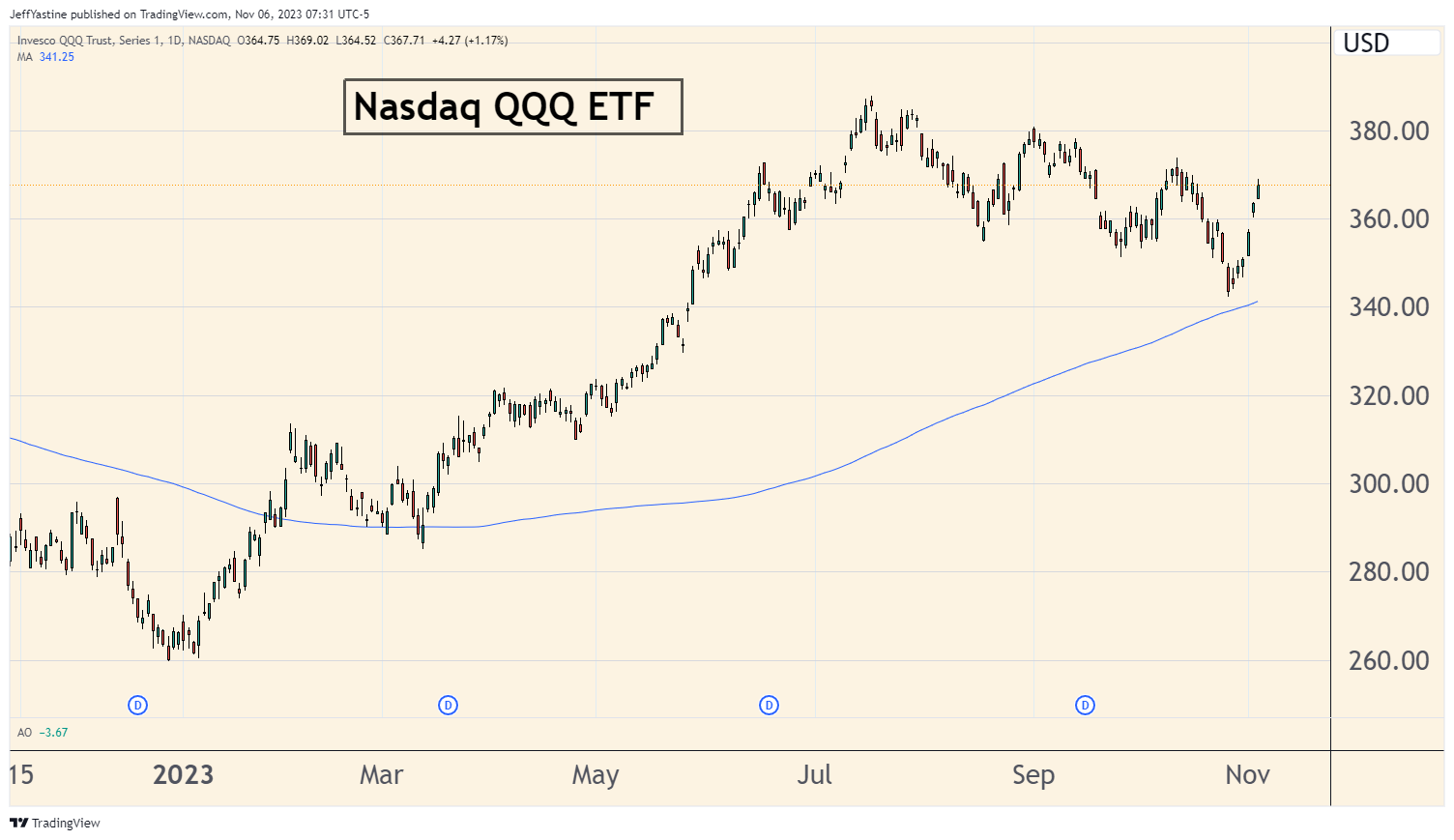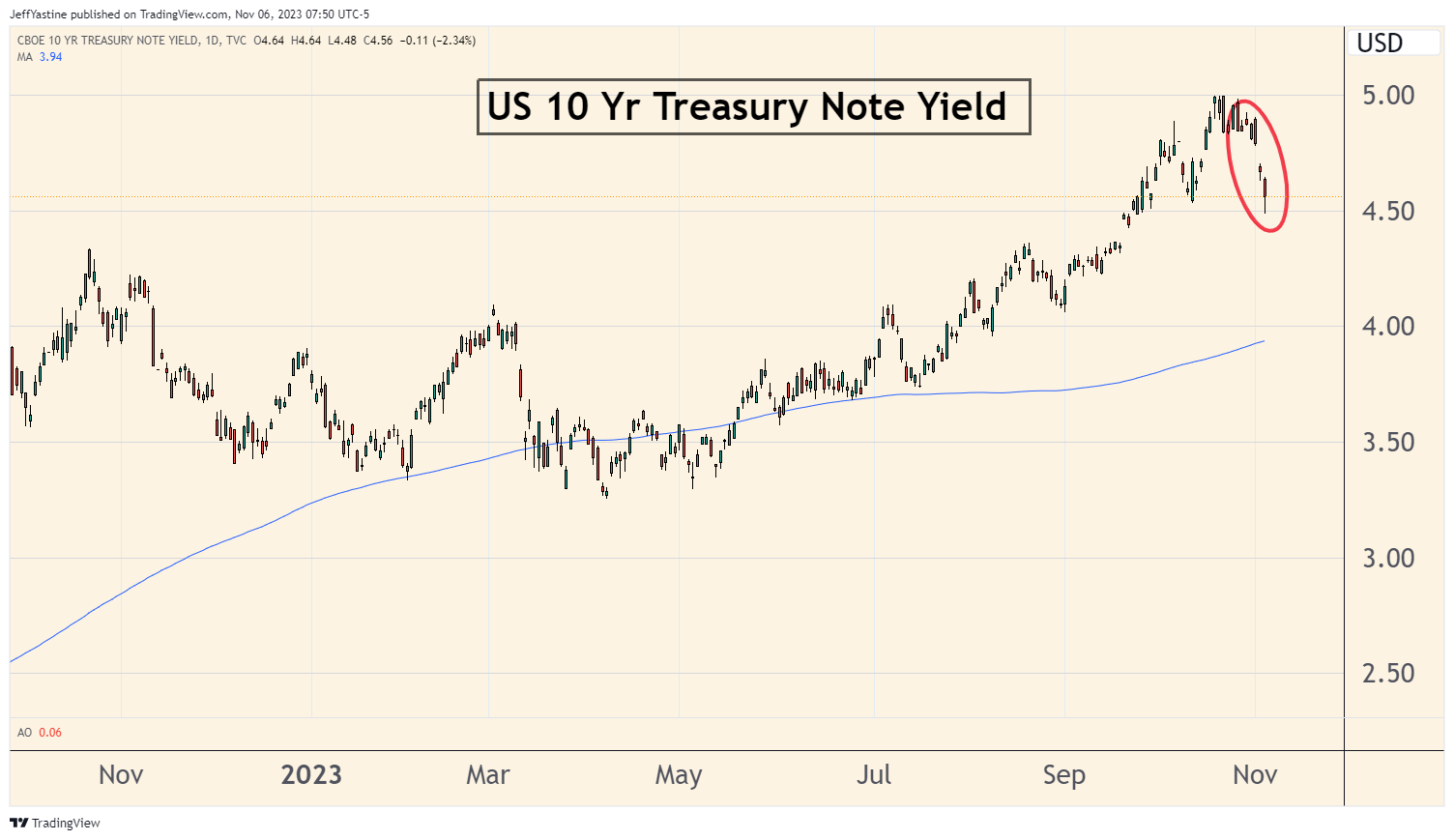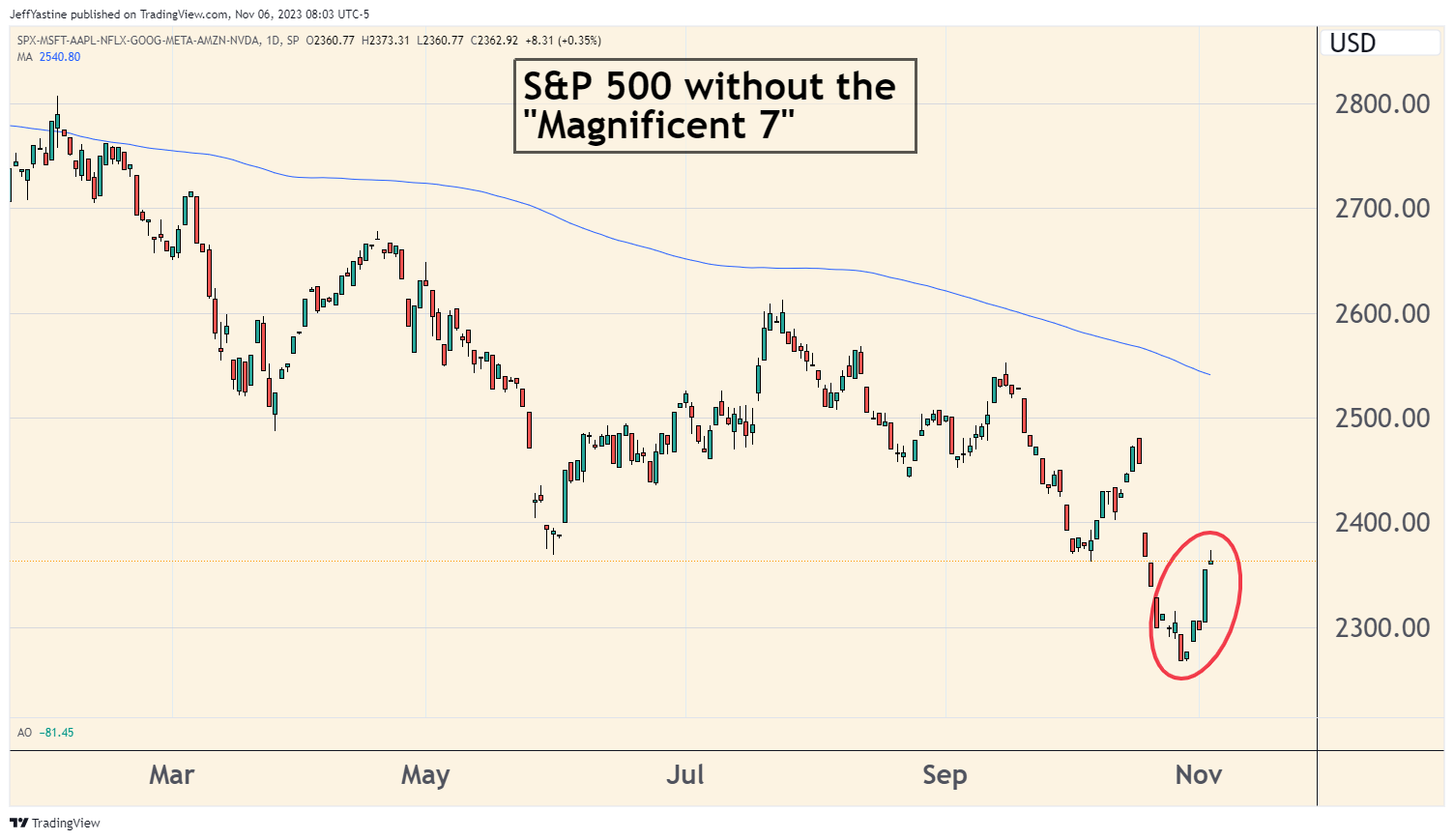About Last Week's "Bungee Rebound"

Can someone hand me a broom?
My crystal ball shattered and I have to clean up the mess.
Two weeks ago the stock market was cooperating with my anticipation of "downhill acceleration ahead." And let's face it, I've been doubtful about the market all summer, and especially so in September and October.
Then came last week's bungee-style rebound after Wednesday's Fed meeting went into the history books:

So is it the "real deal"?
Like I said, my crystal ball shattered so I'm out of the prediction game. I'm buying stocks - I recommended buying more of a utility stock last week that I like - but then again, I'm generally buying select stocks through good markets and bad ones.
But when it comes to last week, there's potential good news - and bad news.
Some promising things to take note: Small-cap stocks rose nearly 8% last week (compared to the Nasdaq's 7% and the S&P's 5.5% gains). Utility stocks also did well, as did most banking stocks. That's a good start.
And as I told premium subscribers late last week, the most short-term bullish impact is the reaction, post-Fed meeting, in the bond market. Judging from the decline in bond yields, some experts think we may be seeing a longer-term peak in interest rates as investors rush back to buy bonds:

Soft Landing vs Hard Landing
Basically, there's a rising sense that the Federal Reserve may continue to talk a good game (threatening to keep raising interest rates) but the data may keep it on the sidelines for the foreseeable future.
At least at face value, that's helpful for consumers and businesses, since they don't have to worry about their financing costs getting even more expensive in the future.
Then there's the predictions of "soft landing" for the economy, and those that believe we'll see a "hard landing" (i.e. a tough recession).
If the data keeps indicating a soft landing, it could continue to light a fire under numerous downtrodden parts of the market, and could keep stocks powering higher for some time to come.
In other words, the megacap tech stocks - which have lead the market for months now...don't have to keep going up. The downtrodden parts of the market - banks, retailers, utilities, debt-heavy blue chip stocks (such as mega-cap) just have to keep rebounding, and play catch up in the weeks ahead.
From that perspective, last week's rebound doesn't look that impressive, at least not yet. Here's a chart showing the S&P 500 if we remove the impact of the mega-cap tech stocks on the index's price:

But sometimes it takes a while before beaten-up stocks start to find buyers again.
The bearish side of things
A bearish prognosticator would say that the market is behaving as if the Federal Reserve cut interest rates last week, rather than elect to do nothing.
And that's still the biggest risk for stock investors.
The cost of a loan may not be going up anymore (if the betting about the Federal Reserve is correct)...but financing costs are still a lot higher now than they were 18 months ago.
And since it usually takes a year or longer for each of the Fed's rate hikes to be felt in the economy... we won't know the full impact of those higher financing costs until this time next year.
And as far as the market goes, that indeed is the million-dollar question.
Best of goodBUYs,
Jeff Yastkine
Member discussion